You might have heard the latest weather forecast about the coming rain or snow. You're wondering how you could weatherstrip your home for your comfort. But can you double up the weather stripping? We've researched the answers to these questions.
Yes, you can double the layer of weatherstripping to ensure that rainwater, snow, and other elements will not enter your home. Simply refer to the steps below on how to weatherstrip a window:
- Measure the length of the window edges. Use this to find the length of weatherstrip you need.
- Scrub off excess dirt along the edges without damaging the window.
- Clean the edges with liquid soap and water. Let it dry.
- Cut the weatherstrip to the correct size, then lay it along the edges starting from the corners.
- Peel the strip off to activate the adhesive beneath it.
- Test the window to ensure you can open and close it without obstruction.
- If possible, add another layer of the strip by overlapping it on top of the existing one.
- Test the window again to see the results.
In this article, we'll discuss what weatherstripping is and how it helps secure your home. We'll see if we can double up the weatherstrip on your doors and windows. There's a lot more we'll talk about in this article. So let's keep reading!
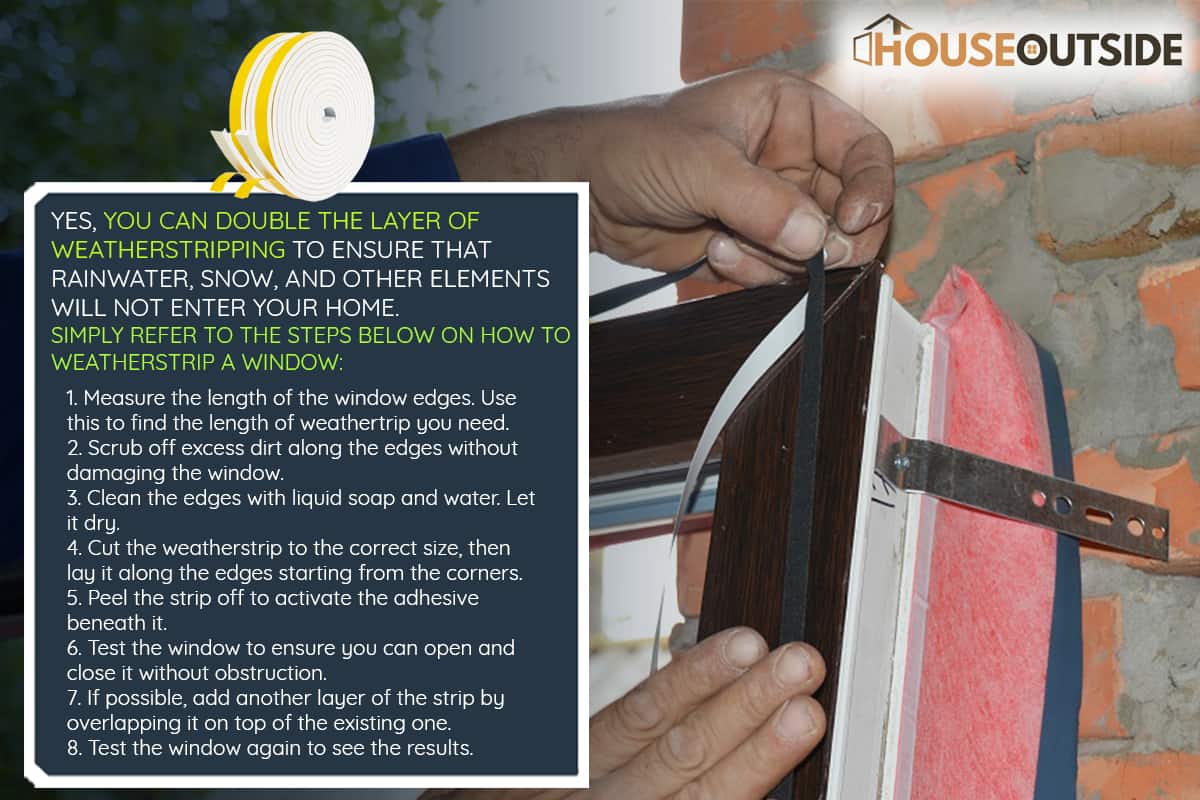
Can You Double Up Weatherstripping?
Weatherstripping is a technique in which you use a strip of water-resistant material such as rubber to seal the windows and doors. This technique can also secure the area from sudden airflow and outside sounds.
A single strip is enough to block the moisture from passing through the gaps between the windows. However, adding another layer of weatherstripping can be beneficial, depending on its size. You can simply measure the thickness of the strip to estimate if two layers can fit in the gap.
Also, you can combine different layers to create stronger and more secure edges. See below for some types of weatherstripping you can consider.
Rubber Strip
Among the list of weatherstrips, the rubber strip is probably the most popular. It's highly elastic, flexible, and water-resistant. Rubber strip is good at holding two surfaces together, which is important in sealing the gap on window or door edges.
See this rubber strip on Amazon.
Tension Seal
A tension seal is usually made of vinyl, aluminum, or steel. It's shaped and folded as a "V" and creates tension when you compress it. Its purpose is to keep the gap secured between the opening and closing of a window or door.
Felt Strip
A felt strip is typically made of wool that is quite soft and used to absorb grease from metallic surfaces. Using a felt strip as a weatherstrip can protect the aluminum edges of a door or window from corrosion. This is a good option in the rainy season.
See this felt strip on Amazon.
Foam Strip
Foam Strip is a compressible sealant that's good for protecting sensitive edges like glass. It also traps fluid and restricts gas from passing through. The foam strip has a layer of rubber and an adhesive on its back. Its soft texture makes it easy to install on complex or uneven edges.
See this foam strip on Amazon.
Door Sweep
A door sweep is used along the door's bottom edge. It has nylon or plastic strips that block the solid dirt from entering, as well as prevent air and water from entering.
See this door sweep on Amazon.
When Should You Weatherstrip?
Ideally, you should start weatherstripping when the temperature reaches 27 degrees Fahrenheit. Also, you should watch the latest weather forecast in your area to plan on sealing the windows and doors before severe rain or snow hits.
Can Weatherstrips Insulate?
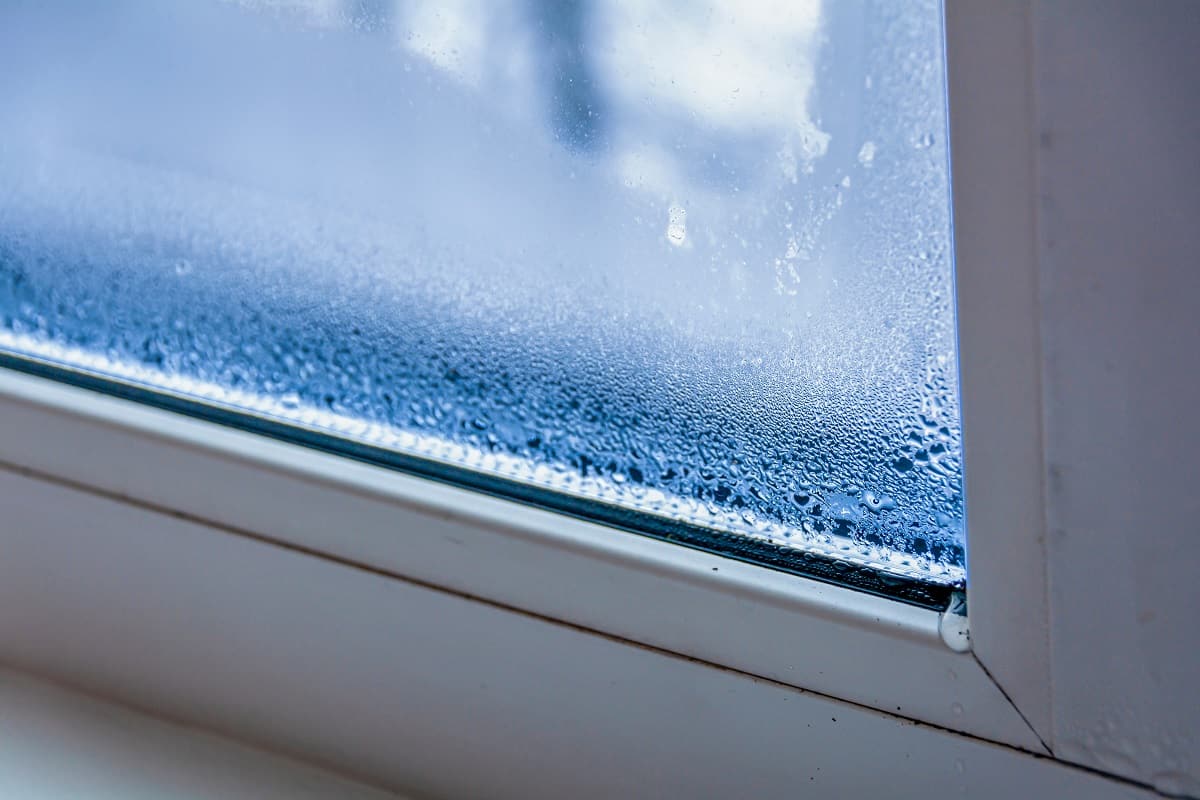
Insulation is a way of conserving energy by trapping the heat when the temperature is high. The trapped heat is then released across the area when the temperature drops.
Insulation is an efficient way of keeping the area warm during the winter and rainy seasons. Weatherstrips can insulate a bit by absorbing and preserving heat during the daytime.
On the other hand, weatherstripping can trap cold temperatures during the summer. You can turn on your air conditioner and allow the weatherstrip to block cold air from escaping the room. The weatherstrip will help you both during the hot and cold seasons.
How Often to Replace Weatherstrips?

You should replace weatherstrips every year or when you see any damage, although weatherstrips can last for up to five years. Replacing the weatherstrip helps retain the quality of the window.
However, the steps may vary depending on the kind of strips you have. So, check the product's installation procedure.
You can refer to the steps below on replacing old weatherstrips:
- Remove the screws or anything that's holding the strips in place.
- Use a chisel or utility knife to peel off the adhesive backing.
- Mix water and dishwashing soap, then clean the edges of the window or door.
- Repaint the frame and fix any damage to the window or door frame.
- Cut the weatherstrip to fit into the window's edges.
- Peel the weatherstrip and attach it firmly along the window's edges. Refer also to the product's instructions for installation.
How to Remove Ice on Windows and Door Edges
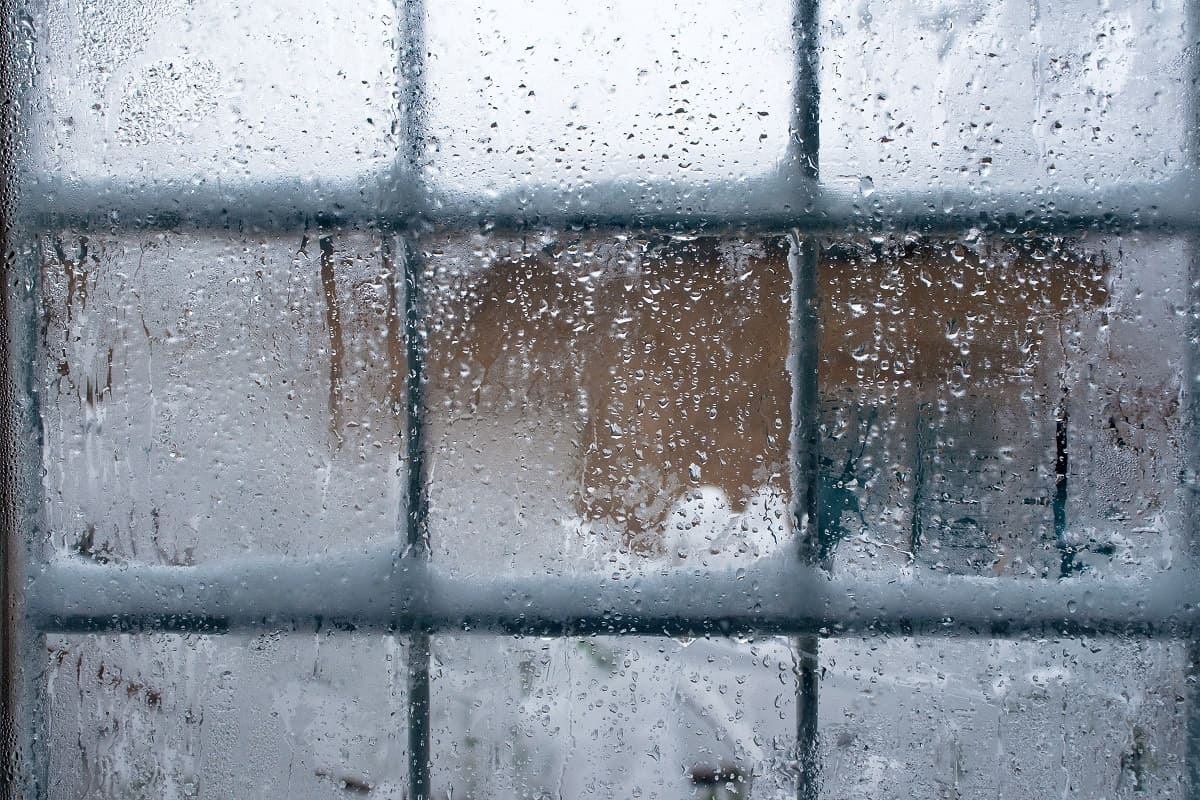
If you think you're too late to weatherstrip the windows and doors that the ice started to build up around them, then there are still solutions you can try. See your options below.
Set the Temperature High
The first thing you can consider is raising the room temperature. You can do this by selecting the option on the AC's thermostat or remote. Just make sure you read the AC's instructions of use. This technique will help melt the ice faster.
Run the Dehumidifier
A dehumidifier is a machine that reduces the moisture buildup in an area. Turn on your dehumidifier to absorb excess moisture and make the air warm.
Turn on the Exhaust Fan
An exhaust fan helps circulate air, which is effective in changing the room temperature. The exhaust fan also enhances continuous airflow, making it hard for the cool temperature to settle in one place.
Hot Water Treatment
If the ice buildup is too severe, you can try the hot water treatment. Hot water will melt the ice on any surfaces. Simply follow the steps below:
- In a bucket, mix hot water with liquid soap and rubbing alcohol.
- Stir the mixture with a stick or long object.
- Pour the mixture onto the threshold or windowsill. Gently pour also on icy windows and doors.
How to Weatherstrip a Garage Roll-Up Door

Most garages have a roll-up door, in which you lift the metal barrier up until it folds. Roll-up doors are usually wide so that the family's vehicle can fit in.
A threshold seal is commonly used at the bottom of the door. It's usually made of rubber or vinyl and sometimes has an aluminum frame for easier installation. Sealing the garage door also restricts pests like rats, cockroaches, and snakes from crawling inside.
See this threshold seal on Amazon.
Simply follow the steps below on sealing a roll-up door using a threshold seal:
- Roll the garage door up, then place the threshold seal at the center where the door meets the floor.
- Pull down the garage door to ensure that the seal is aligned with it.
- Roll the door up again, then use a pencil to trace the seal on the ground.
- Use a strong adhesive to hold the threshold seal firmly on the concrete floor.
- Allow the seal to sir for at least a day before driving over it; this is to ensure that the adhesive will not lose efficiency.
Can Weatherstripping Help Soundproof?
Weatherstrips can somehow cancel the sound from one end to another. This is due to pressure that prevents air from passing through the gap.
Conclusion
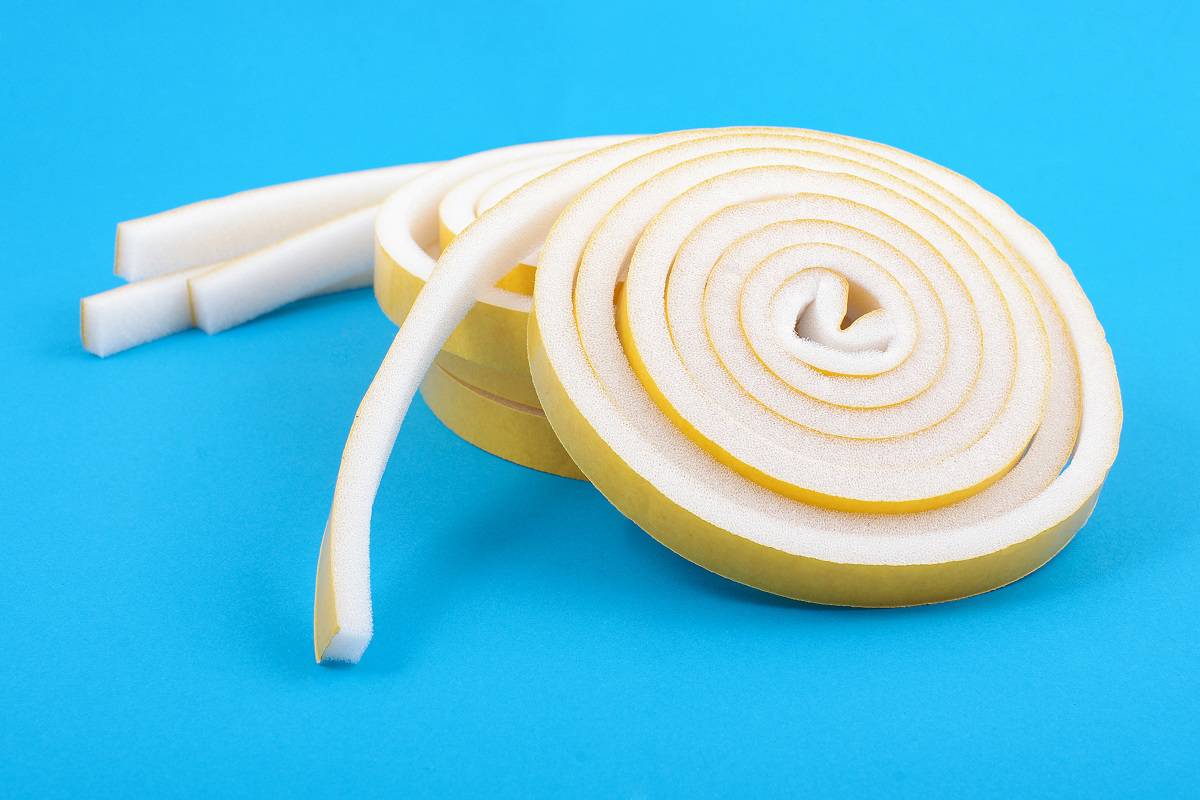
This is undoubtedly another resourceful article, in which we learned if you can double up on weatherstripping. We also provided more details on installing the weatherstrip and what other purposes it serves. Remember to secure your doors and windows even before the bad weather.
Are you ready for more articles like this? Read more with us here:
When To Replace Garage Door Trim?
What Is The Difference Between Interior And Exterior Latex Paint?







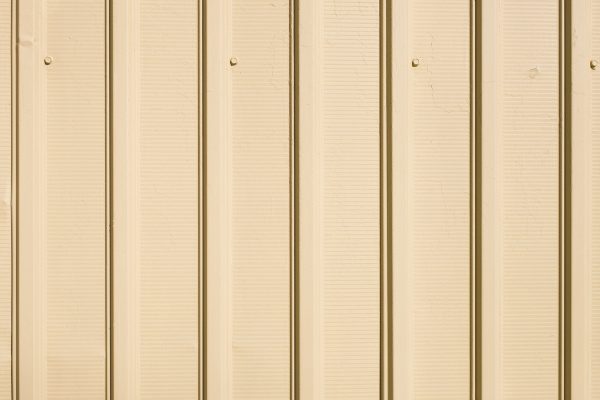
![Roof Gutter Cleaning Tips. Clean Your Gutters. Gutter Cleaning., Do Gutters Smell? [And What To Do About It]](https://houseoutside.com/wp-content/uploads/2022/10/Roof-Gutter-Cleaning-Tips.-Clean-Your-Gutters.-Gutter-Cleaning.-600x400.jpg)